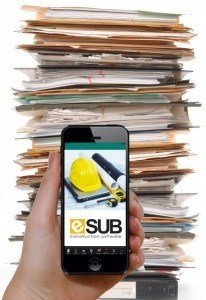
Top Lean Construction with Cloud & Mobile Technology
Table of Contents
Top Lean Construction with Cloud & Mobile Technology
Top Lean Construction is a combination of practical development in design with operational research in order to ensure that a construction project is quickly done, and incurs a lower cost. Since its arrival in the early 1990s, the lean construction movement—and its associated framework, the Lean Construction Institute’s Last Planner System—has emerged as a proven way for construction firms to reduce waste and increase productivity on their projects.
-
Research shows teams that are not using the Last Planner System only complete about 54 percent of the scheduled work within a week.
-
Teams using the Last Planner System typically report 20 percent to 40 percent higher completion rates for their weekly work commitments.
The question for most firms is not whether to implement lean construction, but how best to do so. This is where cloud and mobile technologies have a big role to play in the construction process and can help create the lean type of construction that trade contractors are striving for.
Lean Construction’s Advantage in Cloud and Mobile Technology
In many ways, lean construction is about ensuring the right people receive the right information at the right time. Cloud and mobile technologies, such as eSUB, greatly facilitate these goals.
By storing information in the cloud, a construction team gains a “single source of truth” that connects all the project data—from the master schedule to the weekly work plan, and from quality checklists to the most up-to-date BIM. A single source of truth ensures that your entire team is on the same page and the information is reliable. Accessibility is only part of the story, though. Cloud and mobile technologies also excel at reducing latency in communication.
Things change rapidly and frequently on construction projects. If team members are out of the loop on the information flow, then chances are they’re either not working on what they should be working on, or—even worse—they’re doing something that they shouldn’t be doing, which will need to be reworked later.
Utilizing cloud and mobile technology means that updates can be pushed out to the team as soon as any changes are made, almost entirely eliminating communication latencies, which in turn help reduce waste and ensure reliability and predictability.
Better than Paper or Desktop At this point, contractors might be wondering: “Can I adopt lean construction practices without adopting cloud and mobile technologies? Could I go lean using more traditional tools and methods?”
At this point, contractors might be wondering: “Can I adopt lean construction practices without adopting cloud and mobile technologies? Could I go lean using more traditional tools and methods?”
The answer is yes, but a company probably wouldn’t want to. Here’s why:
Conventional analog methods of planning, such as sticky notes and whiteboards, have several limitations. For starters, a team can’t easily share and distribute a plan that’s physically stuck inside a room. Additionally, modifications to analog schedules are challenging. Say an unexpected delay causes everything on the schedule to be pushed back by a day. To reflect that change, the team needs to physically move dozens of sticky notes one space to the right. Even more vexing, these changes aren’t instantly propagated out to the field, as they would be with cloud and mobile technologies.
So sticky notes isn’t a great option how about something like Excel? While, desktop software, such as Excel, seems like a great idea because it’s perceived as “free,” and it’s something that people already know how to use, excel is not an enterprise-level system. People can make changes to documents from their desktop that nobody knows about, resulting in errors that can affect the integrity of the information. Additionally, Excel users must take time each week to publish and distribute their spreadsheets to the appropriate people.
A recent case study authored by DPR Construction and Sundt Construction (and presented to the Lean Construction Institute Congress) helps put a finer point on some of these concepts. The case study examined a company that did a conventional Last Planner System rollout for the first phase of a project, and then a technology-driven rollout for the second phase.
The findings? The company spent 13 hours a week on areas such as updating and distributing the plan when using conventional methods and only four hours a week using cloud and mobile tools. That’s an entire workday of time reclaimed—and a pretty compelling reason to go with cloud and mobile tools when implementing lean construction. In addition to time savings, the impact of lean construction is keenly felt at a human level by the people who work on the projects, week in and week out.
Benefits of Top Lean Construction
Consider these before-and-after scenarios for a typical Project Manager or Superintendent.
1. Project Scheduling
Before: The burden is on the superintendent to push out orders and instructions to keep the project on schedule.
After: The superintendent is working in a more collaborative environment in which he can have all the different stakeholders contributing and participating in problem-solving and problem-avoidance. Because the whole project isn’t sitting on his shoulders, his stress level goes down, and his quality of life improves.
2. Communication
Before: As the superintendent is driving into work, he has to spend all his time on the phone, making sure the vendors and subcontractors will be where they’re supposed to be.
After: Everybody already knows the plan and knows where to be. The lean planning methodology facilitates continuous communication and information-sharing creating a reliable workflow.
3. Job Site Meetings
Before: The superintendent arrives at the jobsite and needs to update each of the subcontractors on a change in plan, which requires tracking them down and having the same 10 to 15-minute conversation with each one.
After: The subcontractors have the most recent plan because it’s in the cloud. They can have a 15-minute huddle at the beginning of the day when everyone gets updated on the plan at the exact same time on their mobile device.
The result: Everyone knows what each person is doing. The superintendent can spend his time on what he’s supposed to be doing, which is managing the job, not tracking people down.
It’s important to note that cloud and mobile solutions don’t completely get rid of traditional methods of collaboration. The core of any planning process will always involve people working side-by-side, planning the work, negotiating hand-offs, making commitments and sequencing work.
What cloud and mobile does do is streamline those types of activities. It provides a better way to capture, modify, report, distribute and automate information—making the entire process of collaboration more transparent.
Getting Started
For companies that have been sitting on the sidelines with lean construction, the best way to get started is simply to pick a project and try it out. Contractors don’t need to implement lean construction company-wide; it can be done on a project-by-project basis.
The benefits for those who “go lean” are well worth it. Subcontractors have been known to give preferential bids to lean construction projects—as much as 10 percent lower—because they know there will be less waste and less rework.
Additionally, in a market where there’s a huge labor shortage, if a contractor can provide workers with a higher quality of life, it can retain people longer—and that can have a big impact on the overall business. Perhaps most importantly, lean construction is quickly becoming a competitive differentiator to customers. If the company is not doing lean construction, take a look around—it’s likely that direct competitors are.
Firms that use cloud and mobile tools to embrace top lean construction will ensure their competitive advantage remains intact.
By Tom Feliz
How eSUB Can Help
eSUB is a cloud-based project management platform built especially for subcontractors. It seamlessly integrates with leading construction software systems so you can easily switch from your current RFI process to a cloud-based system to upgrade RFI process.
eSUB organizes all of your project information in one place, allows for smooth collaboration, and streamlines communication through its intuitive interface. It also works on your mobile, so you can track projects on the go—no matter where or when—and stay up-to-date.
